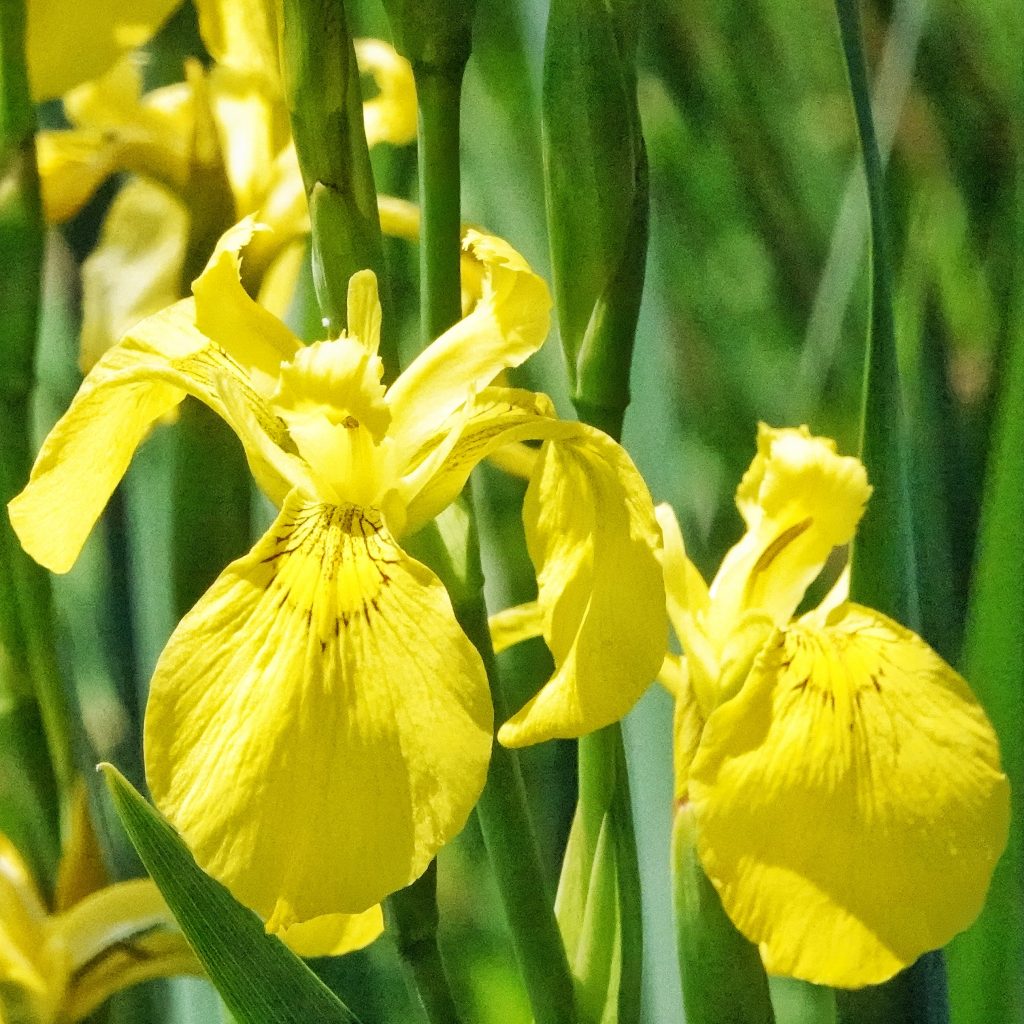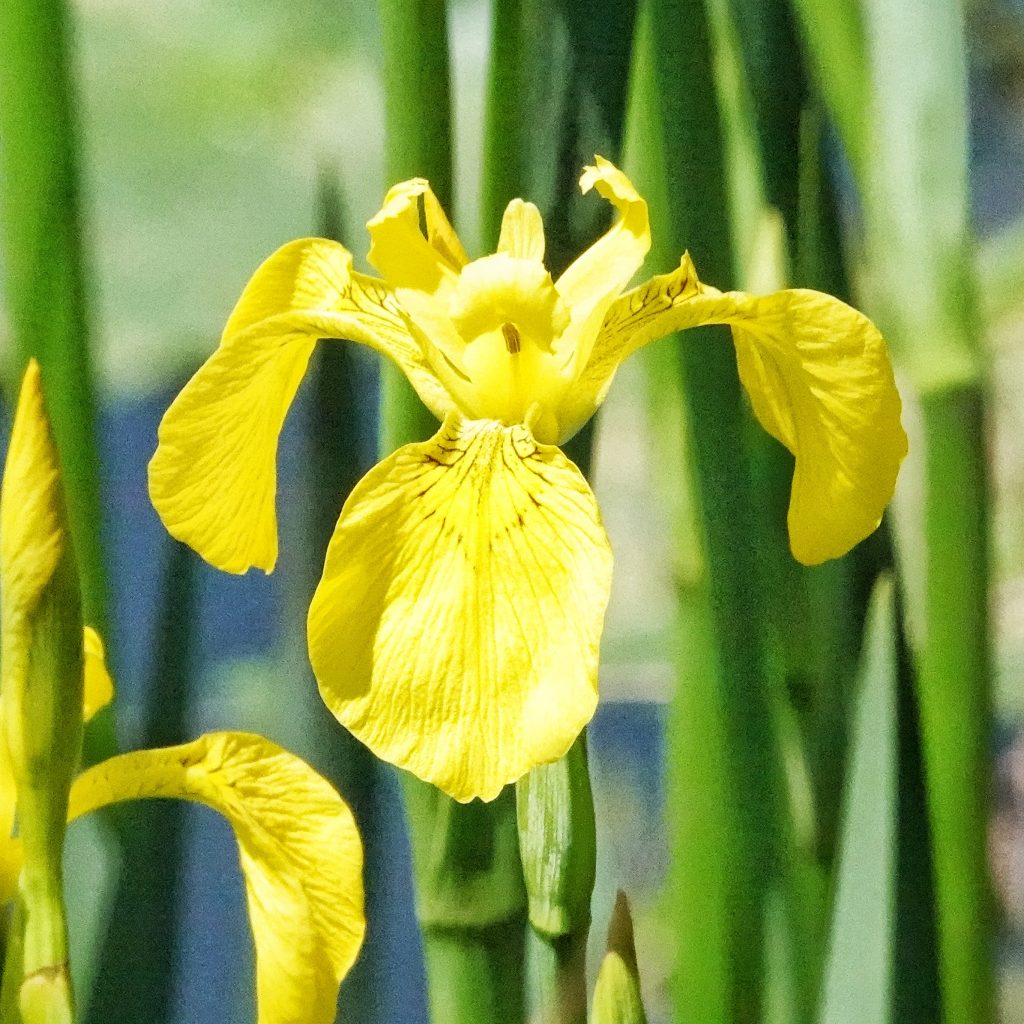
Despite the fact that it is a non-native species, and quite invasive, it is hard for me to dislike anything with a flower (which is quite probably the model for the European heraldic symbol fleur-de-lys) as beautiful as that of Iris pseudacorus (yellow flag). Really though, these old world irises are bad news for our waterways, choking out the natives and providing very little forage for wildlife, although they do produce a fair amount of nectar. But they shore are purty.
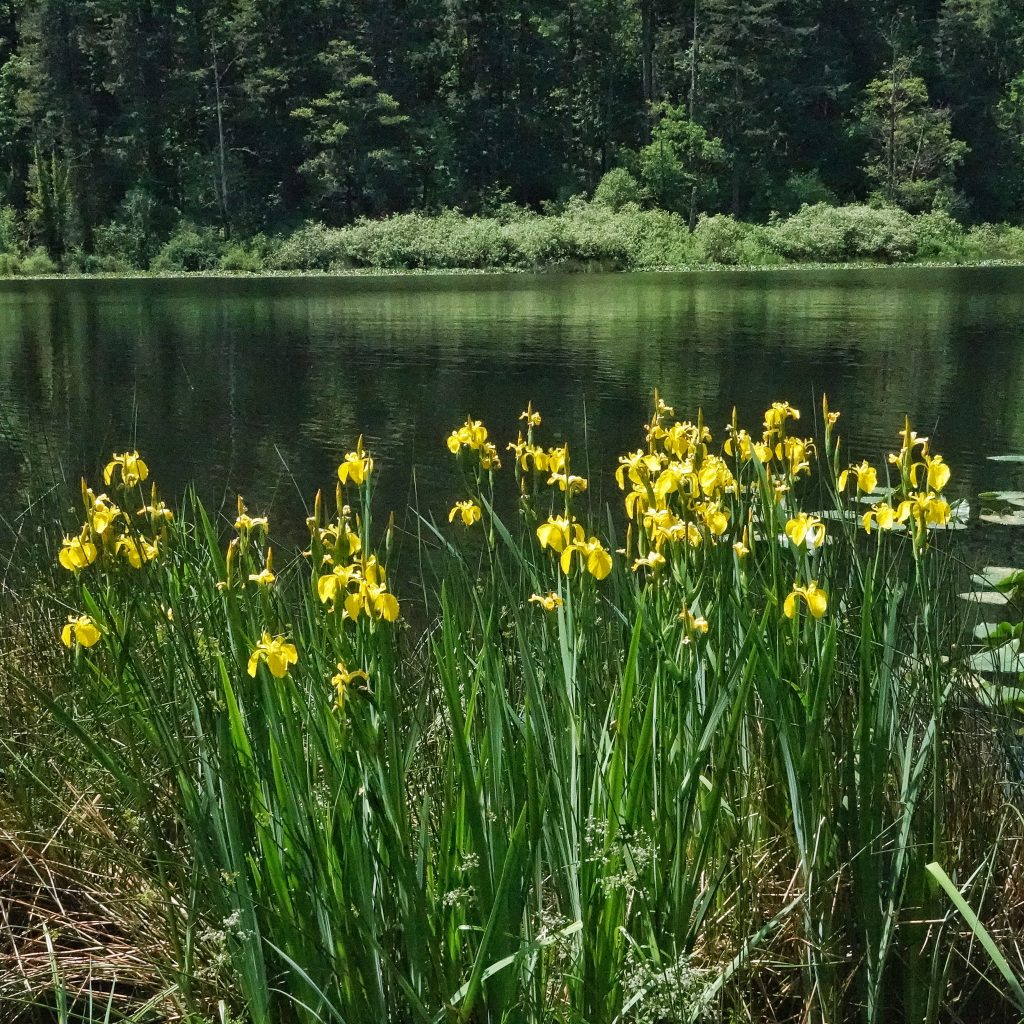
Ethnobotany– Not surprisingly for a plant not native to North America, I can find no ethnobotanical uses for this plant. As for modern foragers “The leaves, and especially the rhizomes, of this species contain an irritating resinous substance called irisin. If ingested this can cause severe gastric disturbances. Plants can cause skin irritations and allergies in some people…The seed is said to make an excellent coffee substitute as long as it is well roasted. Caution is advised, it might be poisonous…A beautiful yellow dye is obtained from the flowers. A good black dye is obtained from the root if it is mixed with iron sulphate. It is brown otherwise. The root is a source of tannin and has been used in making ink. A delicately scented essential oil, obtained from the roots, has been used to adulterate the oil of Acorus calamus.” Iris pseudacorus Yellow Flag, Paleyellow iris PFAF Plant Database; The author of the website Buzzard Bushcraft reports that “I often nibble on new growth cattail but recently when out I wasn’t thinking and I grabbed a new growth ‘cattail’, I quickly peeled it and started eating it, but I knew right away that the texture was wrong, I quickly spat it out and checked to see that the plant I was holding was actually Yellow flag iris and not cattail, but the damage was done, my mouth and throat were burning, like I’d eaten very hot chillies and it stayed that way for 8 hours and I ended up with lots of little blisters on the inside of my mouth and throat, all due to the fact that I didn’t take care or pay attention.” http://www.buzzardbushcraft.co.uk/2016/05/cattail-and-yellow-iris-i-got-it-wrong.html
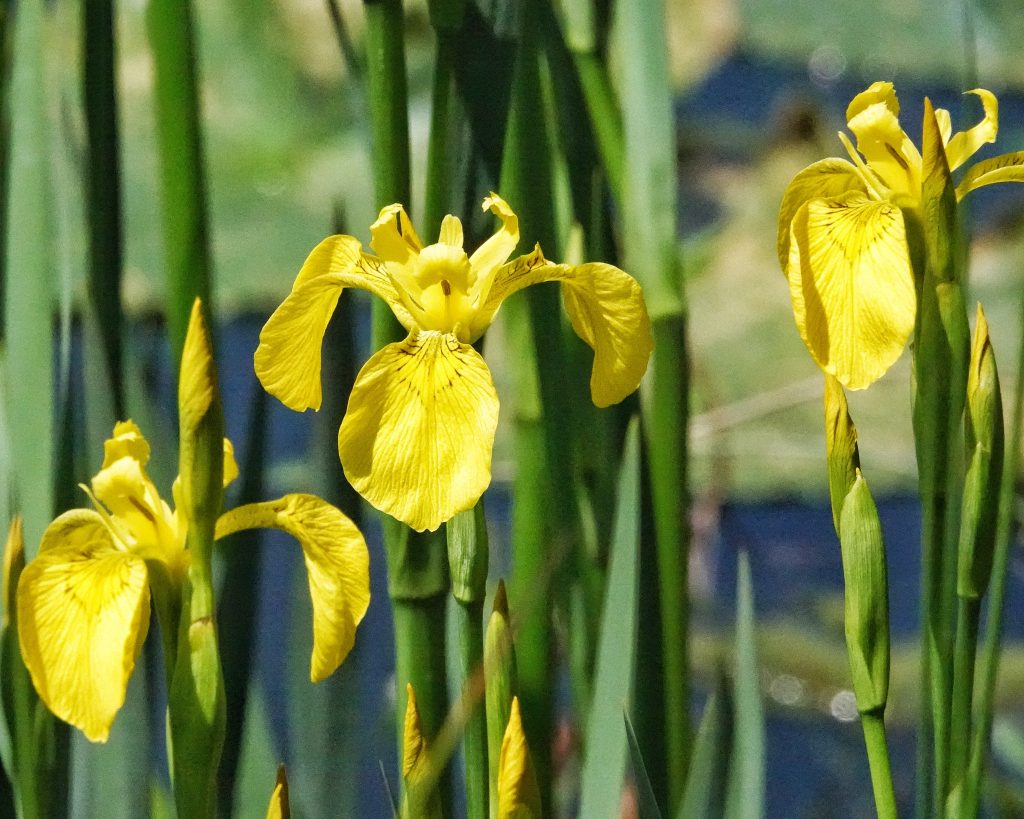
Description– “Perennial…Height: 1-3’…Erect stems and leaves. Leaves 1 in. wide, stiff. Flowers numerous, bright yellow, with brown marks outlining crest area, petals narrow near middle.” Iris pseudacorus | Yellow Flag | Wildflowers of the Pacific Northwest ; Leaves deciduous, stiff, erect at first then recurved; blades dark green with prominent median thickening, 20–30 mm wide; cauline leaves equal in height to inflorescence.”OregonFlora Iris pseudacorus ; the leaves are deep green in color with a very pointed tip, and in cross-section the leaf is diamond shaped in the middle, and football shaped at the base, with close together and parallel veins.
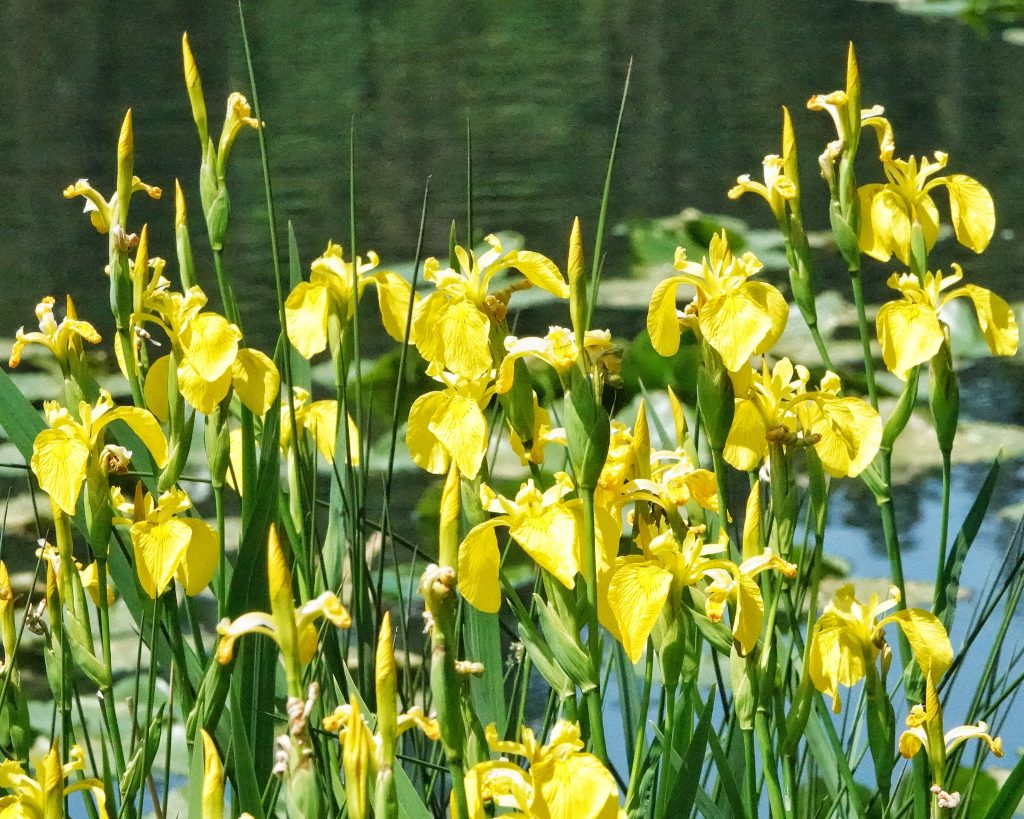
Similar species– Flowering yellow flag won’t be confused with anything else, but when finding only leaves it can easily be confused with Typha spp. (cattails), which have their veins arranged in a honeycomb shape, with blue green leaves that are crescent shaped in cross section near the middle and almost round at the base, with a rounded apex; for a nice set of comparison photos, as well as a cautionary tale about complacent foraging, see http://www.buzzardbushcraft.co.uk/2016/05/cattail-and-yellow-iris-i-got-it-wrong.html
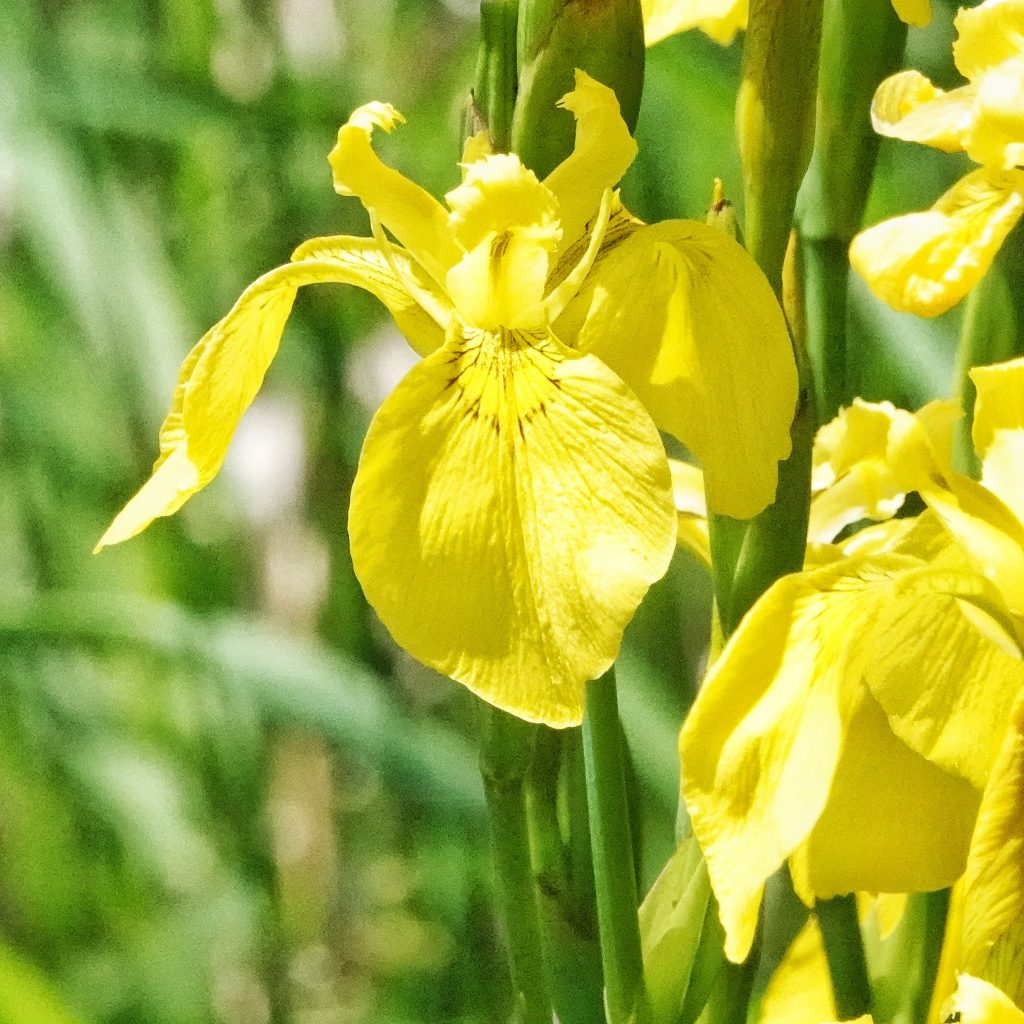
Habitat– “Swamps, wet shores of rivers and lakes, irrigation ditches.” OregonFlora Iris pseudacorus
Range– Native to Europe, Western Asia, and northwest Africa, but now naturalized almost worldwide; found almost region wide in appropriate habitat, but mostly absent from shrub steppe and sw Oregon/nw California; often (but not always!) decreasingly common as one moves away from population centers where it has been introduced.
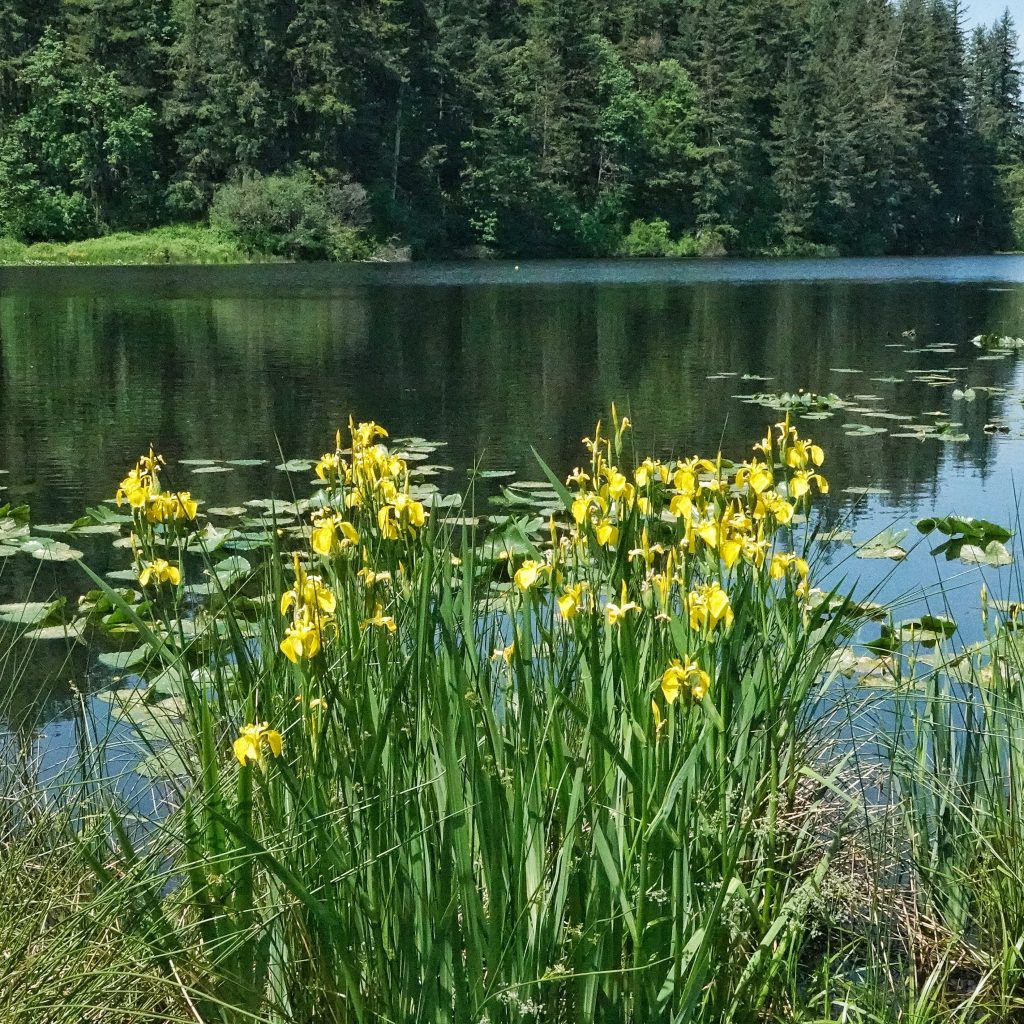
Eaten by– “The flowers are cross-pollinated primarily by bumblebees, which seek nectar from the flowers. The caterpillars of Macronoctua onusta (Iris Borer Moth) bores into the rhizomes of Iris spp. Another insect, Iridothrips iridis (Iris Thrips), feeds on young leaves and the inner surface of leaf sheaths. The foliage is toxic and avoided by most mammalian herbivores, although muskrats sometimes eat the rhizomes and lower stems.” Yellow Iris (Iris pseudacorus) entry on Illinois Wildflowers.
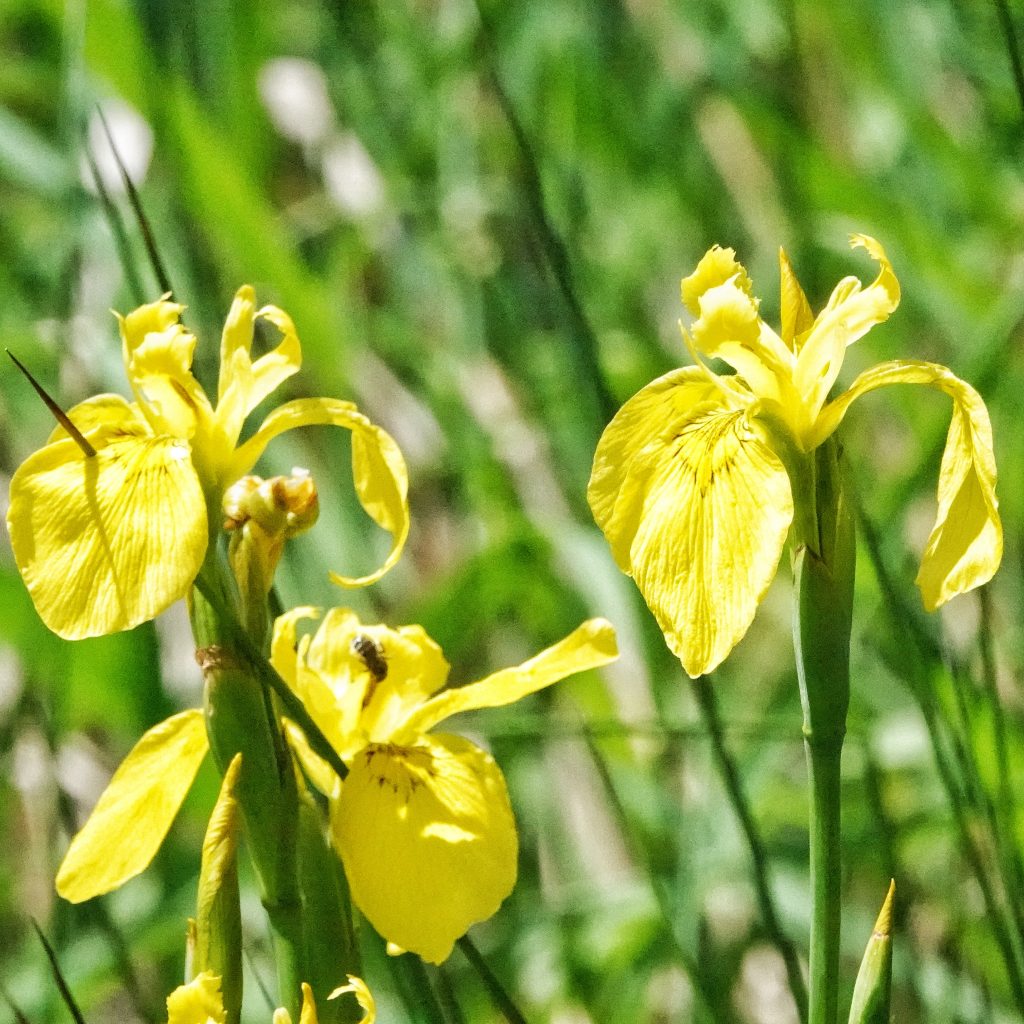
Reproductive timing– Flowers from May through July
Etymology of names– Iris is from the Greek goddess of the rainbow, which seems an appropriate appellation. “Its specific epithet pseudacorus means “false acorus”, referring to the similarity of its leaves to those of Acorus calamus (sweet flag), as they have a prominently veined mid-rib and sword-like shape. However, the two plants are not closely related.” https://en.wikipedia.org/wiki/Iris_pseudacorus
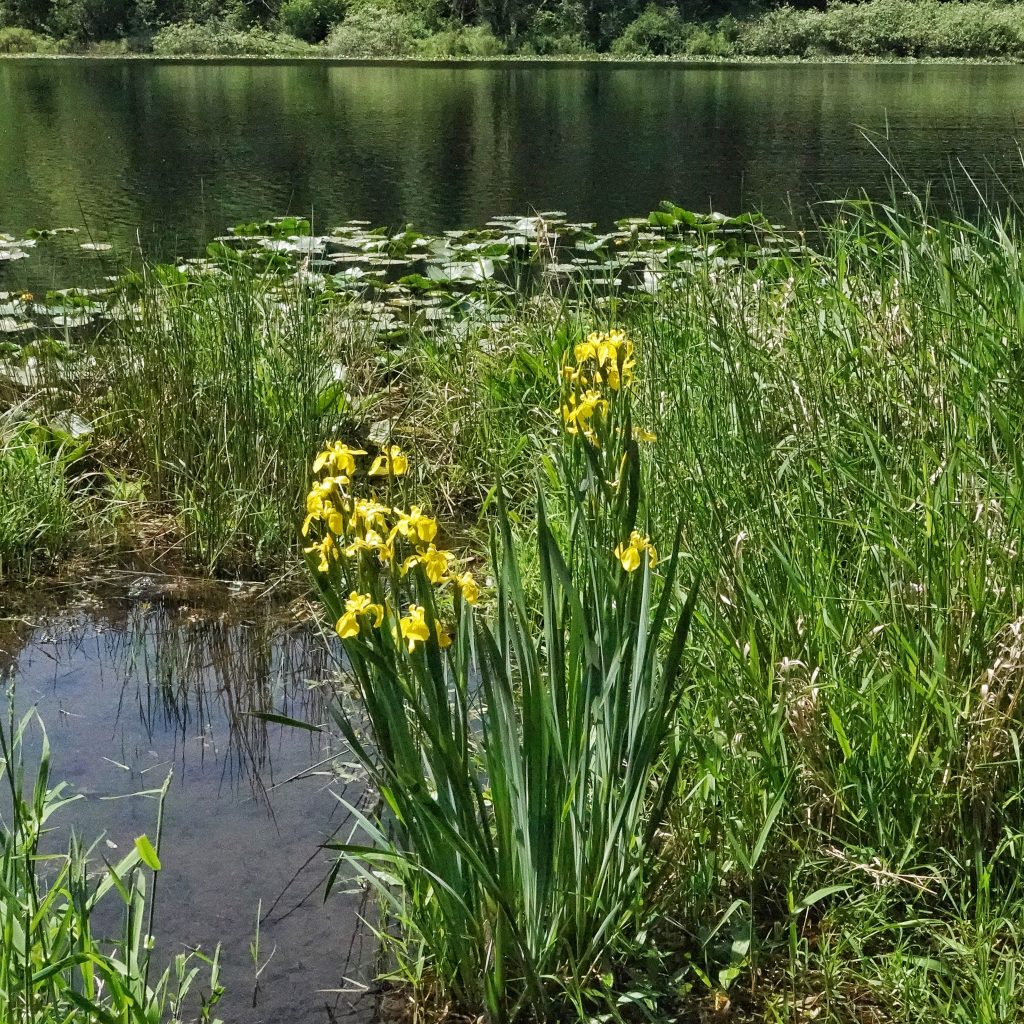
Yellow Iris (Iris pseudacorus)
| Center for Aquatic and Invasive Plants | University of Florida, IFAS
Iris pseudacorus Yellow Flag, Paleyellow iris PFAF Plant Database
Iris pseudacorus | Yellow Flag | Wildflowers of the Pacific Northwest
Iris pseudacorus – Burke Herbarium Image Collection
https://en.wikipedia.org/wiki/Iris_pseudacorus
http://www.buzzardbushcraft.co.uk/2016/05/cattail-and-yellow-iris-i-got-it-wrong.html
